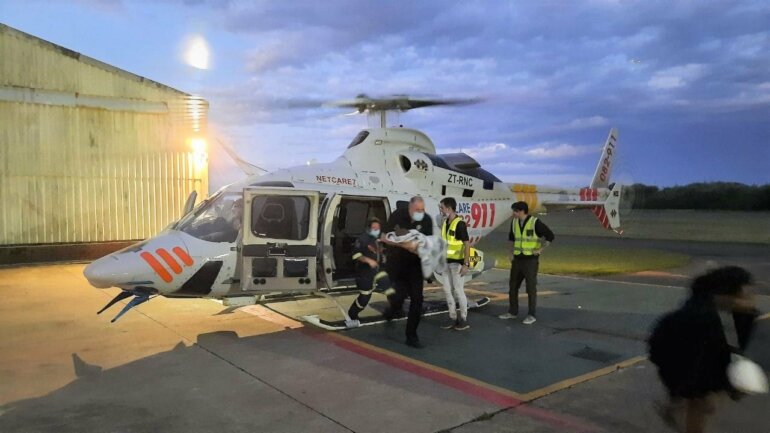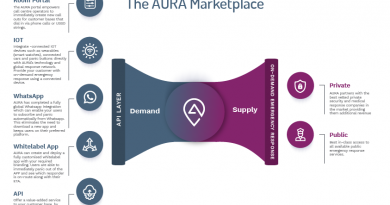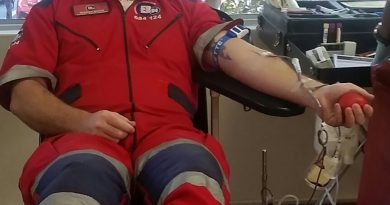Netcare 911 shares insights on rescue efforts in the Ethekwini and surrounding regions
This last week had seen unprecedented rain falling in the Ethekwini and surrounding regions.
Weather reports had suggested heavy rain with a chance of localised flooding, as we all have experienced many times before, however no-one, absolutely no-one was prepared for what was to come.
The rain came down with such fury, leaving little time to react.
Roads and infrastructure were completely destroyed in no time at all, leaving people and livestock stranded in one way or another.
Motorists, who sat in their cars on damp roads after a usual day of work, suddenly had to run for their lives as walls of chocolate brown sludge swallowed their cars.
Parents couldn’t get home, children including young infants were stranded at schools and day care centres. Places of work had been engulfed in raging torrents of water.
People and animals alike were clinging to whatever support they could, whether it be the tip of a tree or the roof of a house, in order to escape almost certain death.
The rural areas had taken the brunt of the devastation. Mountain sides had given away, boulders the size of buses broke off cliff faces, leaving nothing in their path of destruction.
Mud, water and deadly debris had wiped-out entire families in an instant. Sadly, chances are their departed loved ones might never be recovered.
Media had suggested that this torrential down-pour was the highest recorded rain-fall in the history of KwaZulu-Natal.
Dams had burst their banks, ankle deep streams had become mighty rivers. Roads, houses, water, communications and electricity supply had all been compromised.
All spheres of emergency services had soon become overwhelmed by the power of mother nature, reminiscent of an apocalyptic end of the world Hollywood movie, we were all left terrified.
Not only was it a record number of phone calls national emergency operations centres had received for help, but the growing frustration of not being able to reach victims whose lives could and in many instances were taken.
Emergency and rescue services personnel, who have all taken an oath and an unwavering commitment to protect the sanctity of life, were now faced with the harsh reality that despite best round the clock efforts, not all life could be saved.
Access to the most severely hit areas within the first couple days was and still is only possible by helicopter.
Hampered by sporadic down-pours and a visual line of site only a few meters in front of you had made rescue by helicopter near impossible without risking even more life.
Covered in mud, tired, hungry, physically exhausted, desperate to be the first one to shout “I found someone who’s alive” sadly faded as rescues had started becoming recoveries.
Out of nowhere towards the late afternoon, the rains had come to an end, leaving a bright blue sky.
The weather services had however then predicted that more rain was soon to come, leaving rescuers scrambling.
Durban’s Virginia Airport had suddenly become the heart beat of the rescue operations.
The lifeblood in the form of helicopters and support personnel from the South African Air Force, South African Police Services Air Wing, Fidelity-ADT, Netcare 911, Red Cross Air Mercy Services, Transnet Ports Authority and private helicopters from Legend Aviation, KZN Aviation and others had sprung into action.
With the careful and coordinated guidance of the Air Traffic and Navigation Services at King Shaka International Airport and Air Traffic Control at Virginia airport, pilots, flight and ground crew sprung into action.
Virginia Airport had once again provided the one and only platform in which to launch mass rescue and recovery efforts, which saw helicopters landing and taking off every couple of minutes, even as the sun began to set.
Rows of government ambulances could be seen lining the entrance to the airport.
Departing on one of the many airborne rescue missions up the Umgeni Valley, the mood had gone from anxiety and elation at the thought of being able to make a difference by saving lives to one of uncontrollable tears and fears as the destruction and desperation of South Africa’s most vulnerable had become a first hand, in your face reality.
There are no words in the English dictionary to visually describe what horrors had taken place, ultimately leaving you emotionally numb at the core.
Similar to the likes of the Natal Floods in 1987 and cyclone Demoina, the 2022 devastation will be etched into people’s memories for years to come.
At Netcare 911 we are proud of all our staff, as with all other emergency services, volunteers and NGO’s who were at the tip of the spear risking their own lives to help those that could be saved and bringing closure to the families of those victims that could not be saved.
To the survivors who have lost loved ones, words do little to ease the suffering, however we share your pain and offer our deepest condolences.
To the search and rescue teams from all over South Africa that descended on Durban and will spend the next few weeks digging through unforgiving terrain, our hearts are with you.
Image: Netcare 7 HEMS flight crew Ceron Meadows and Gary Paul assisted by Legend Aviation staff Jason Bashford and Daniel Pfeiffer rush a baby girl injured in a mudslide into an awaiting ambulance.




